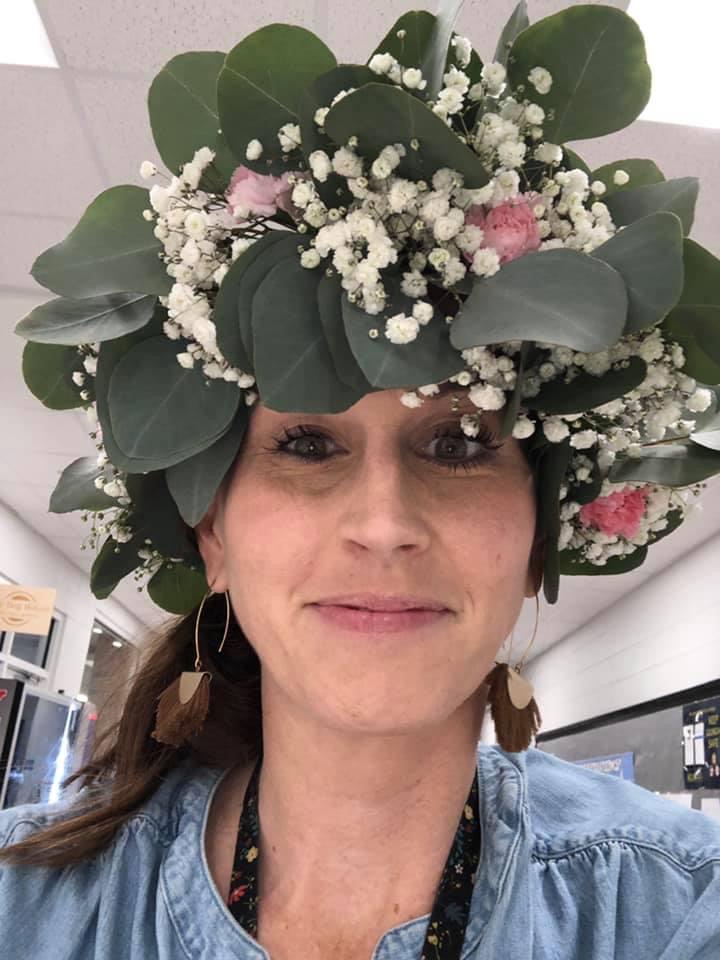Rachel Kinsaul is currently in her sixth year of teaching agriculture classes at Morgan County High School. She chooses to implement sustainable agriculture into her curriculum in multiple ways to benefit different types of learners, with a strong focus on experiential learning.

One way Kinsaul does this is by taking her students on multiple visits to sustainable farms throughout the school year, allowing them to see how these farms operate sustainably. In addition to a local farm, Kinsaul and her students visit a dairy farm and a forester.
“Our community has been extremely receptive to us coming out and making visits,” Kinsaul said.
Why It’s Newsworthy: Kinsaul’s focus on sustainability with regards to experiential learning allows her students to see the importance of sustainable practices in agriculture through real life examples.
One of Kinsaul’s goals in taking these visits is to show her students the different aspects of sustainable agriculture.
“When you think about sustainable agriculture, a lot of times we’re thinking about natural resources, which are super important. But it’s also important that it’s economically sustainable,” said Kinsaul.
A Student’s View
The experiential learning teaching method is especially beneficial for Rachel Wood, a senior at Morgan County High School, who has taken an introductory agriculture course and is currently taking a floral design course, both taught by Kinsaul.
“Learning in the classroom is one thing, but then actually going out and doing it is another,” Wood said. “So, I feel like I retain information better that way, when I go out and see what we learned in the classroom actually happening.”
Along with the trips she made in her introductory agriculture class, Wood has visited a flower farm with Kinsaul as part of her floral design class. Visiting farms has allowed Wood to get a better understanding of sustainable agriculture.
Outside Perspectives
Kinsaul’s focus on experiential learning is parallel to one of the key themes put forth in a curriculum designed by the North Central Sustainable Agriculture Research & Education program hosted by the University of Minnesota.
“Real world examples provide the best opportunities for understanding the potential and the challenges of sustainable agriculture,” wrote Douglas Maxwell and Diane Mayerfield, naming a key theme of the curriculum. They continued that “teachers are strongly encouraged to introduce students to people engaged in sustainable agriculture or food businesses in their immediate area.”
Kinsaul understands that, while experiential learning is beneficial, it is not the only valuable teaching method. She also implements other teaching methods, such as lectures and student application, into the classroom.
Some of Kinsaul’s lecture topics on sustainable agriculture include new technologies and different sustainable practices, such as contour planting and no-till farming. She enables her students to learn through student application by creating models and simulations for her students, like allowing them to perform their own soil tests.
Eric Rubenstein, who holds a doctorate of philosophy in agricultural education and communication, finds the combination of these methods to be successful in teaching sustainable agriculture. Rubenstein is an associate professor within the Department of Agricultural Leadership, Education and Communication, part of the University of Georgia College of Agricultural and Environmental Sciences.
He remarked that the goal of agriculture teachers is to present students with opportunities to actively take in what they are learning in the classroom and apply it to real world settings. While this is the goal, according to Rubenstein, this is not the only way agriculture should be taught.
“Our job as a teacher is to make sure we provide learning opportunities that meet the needs of every learner in the classroom,” said Rubenstein. ”It could be anything through a lecture, demonstration or through student application.”
Kinsaul uses each of these three avenues to teach her students, and she feels that her students are receptive of the lessons she has taught on sustainable agriculture.
“I think that they understand that as agriculturalists that maintaining our resources is really important. So, they understand why we need to be doing the things, you know, that we talked about,” said Kinsaul.
Wood feels that Kinsaul’s instruction has prepared her with the knowledge and skillset to someday work in agriculture in a sustainable fashion. She hopes to attend Abraham Baldwin Agricultural College, pursue an agribusiness degree and start a career in agriculture.
Challenges
While Kinsaul’s instruction on sustainable agriculture has been successful, that is not to say she has not faced challenges. A lack of resources is one of the main challenges Kinsaul has been forced to combat.
“Large scale implementation of these practices just isn’t super realistic for the scenario that we’re in at the high school,” said Kinsaul.
Rubenstein was able to identify a challenge with implementing Kinsaul’s methods of teaching sustainable agriculture at other high schools throughout the state.
“I think that depending on the location of the school, finding farms that are using sustainable practices, and demonstrating them in a way that you’re going to be able to get out and onto that farm can sometimes probably prove challenging,” said Rubenstein. “I think finding a farm that truly abides by that every day of the week is going to be maybe a little challenging depending on where you are.”
Rubenstein further points out that some areas of the state may not have production agriculture, making high schools in those areas unable to witness sustainable agriculture firsthand.
Regardless of the challenges, Rubenstein finds Kinsaul’s focus on experiential learning to be a fruitful tactic for teaching the next generation of farmers about sustainable agriculture.
“And I can tell you, without a doubt, that it is definitely something that is sustainable, not only for a course about sustainable agriculture, but any courses that we teach within the agricultural curriculum in the middle or high school setting,” said Rubenstein.
Anna Lyn Mobley is a senior majoring in journalism and minoring in political science at the University of Georgia.









Show Comments (0)